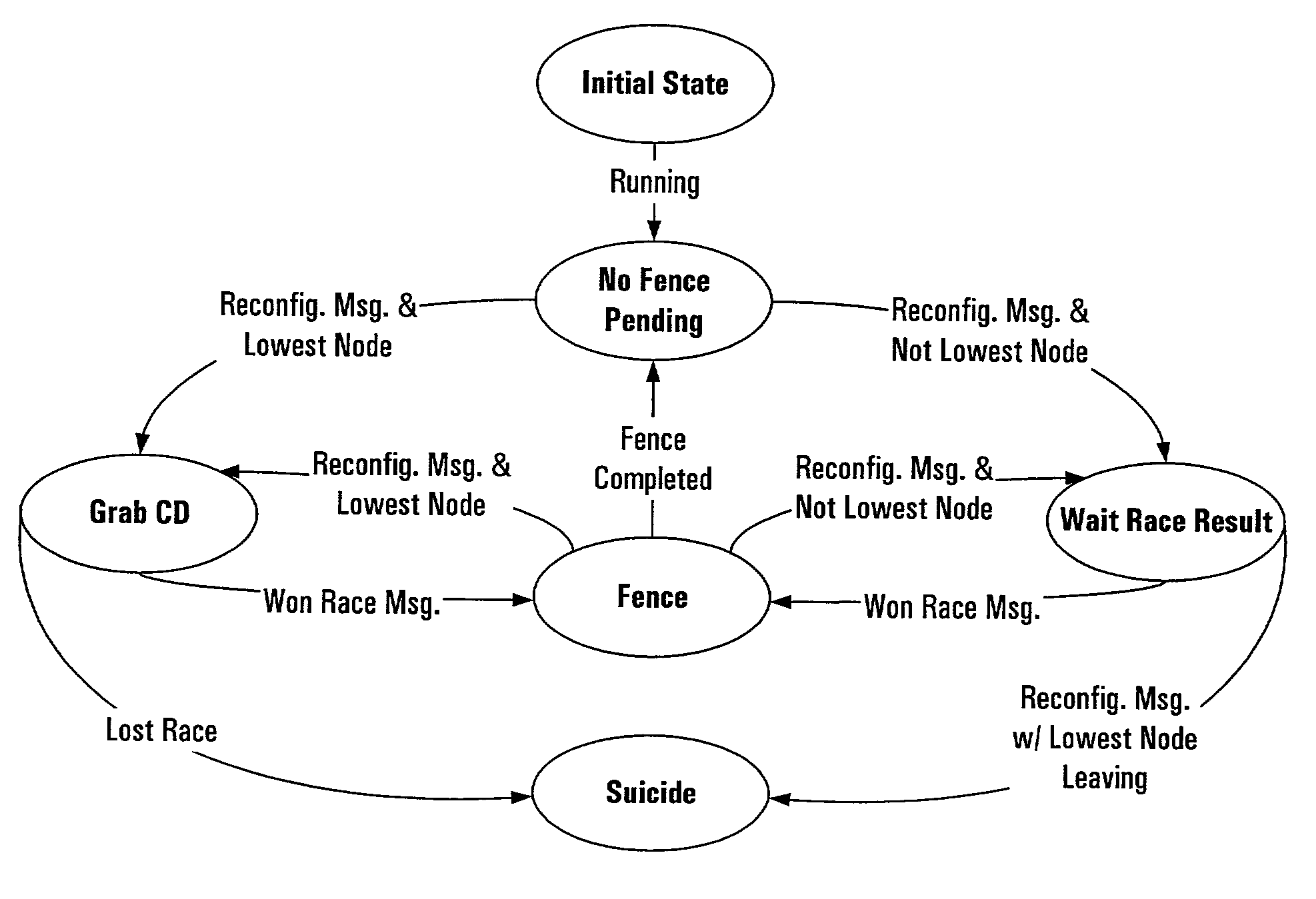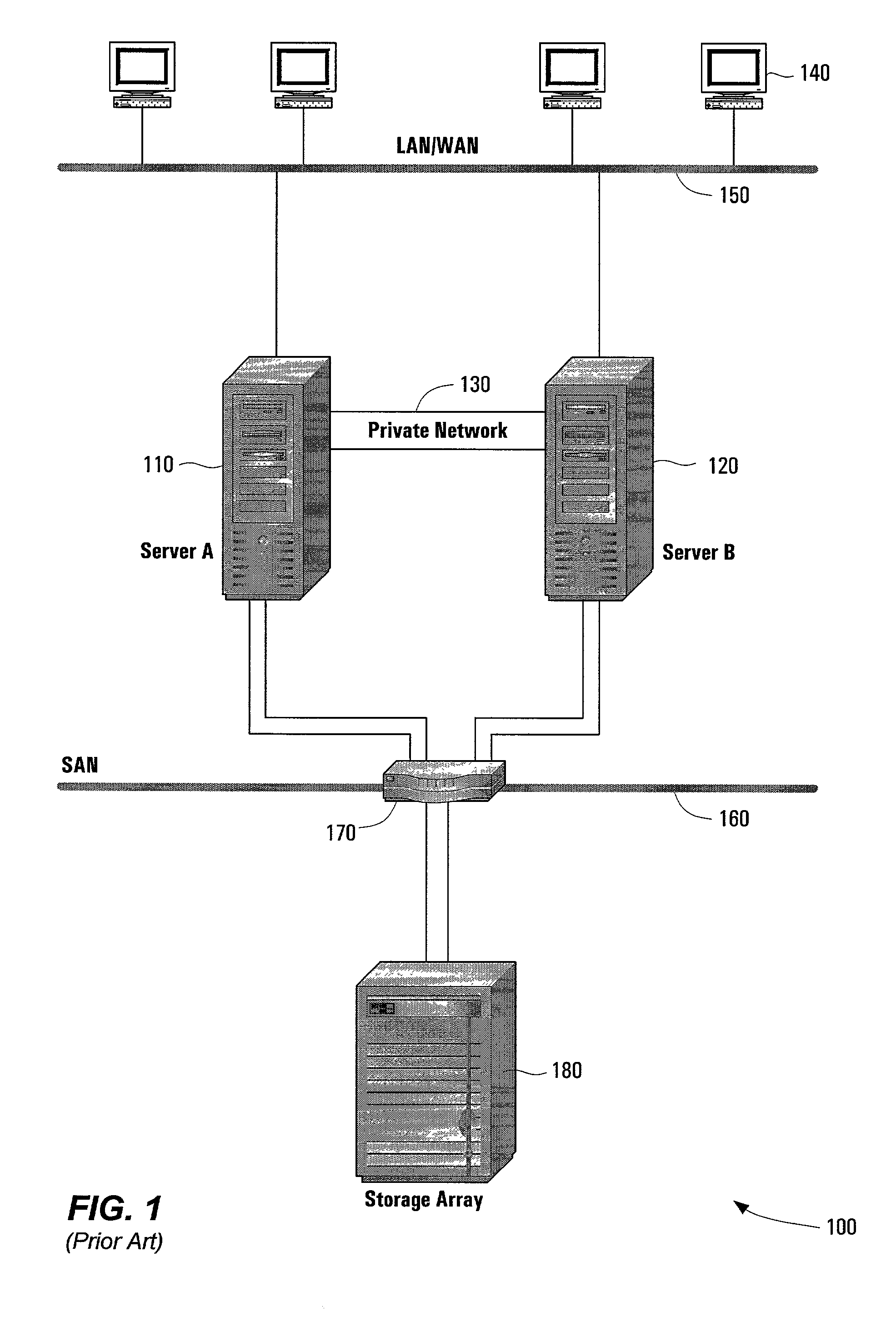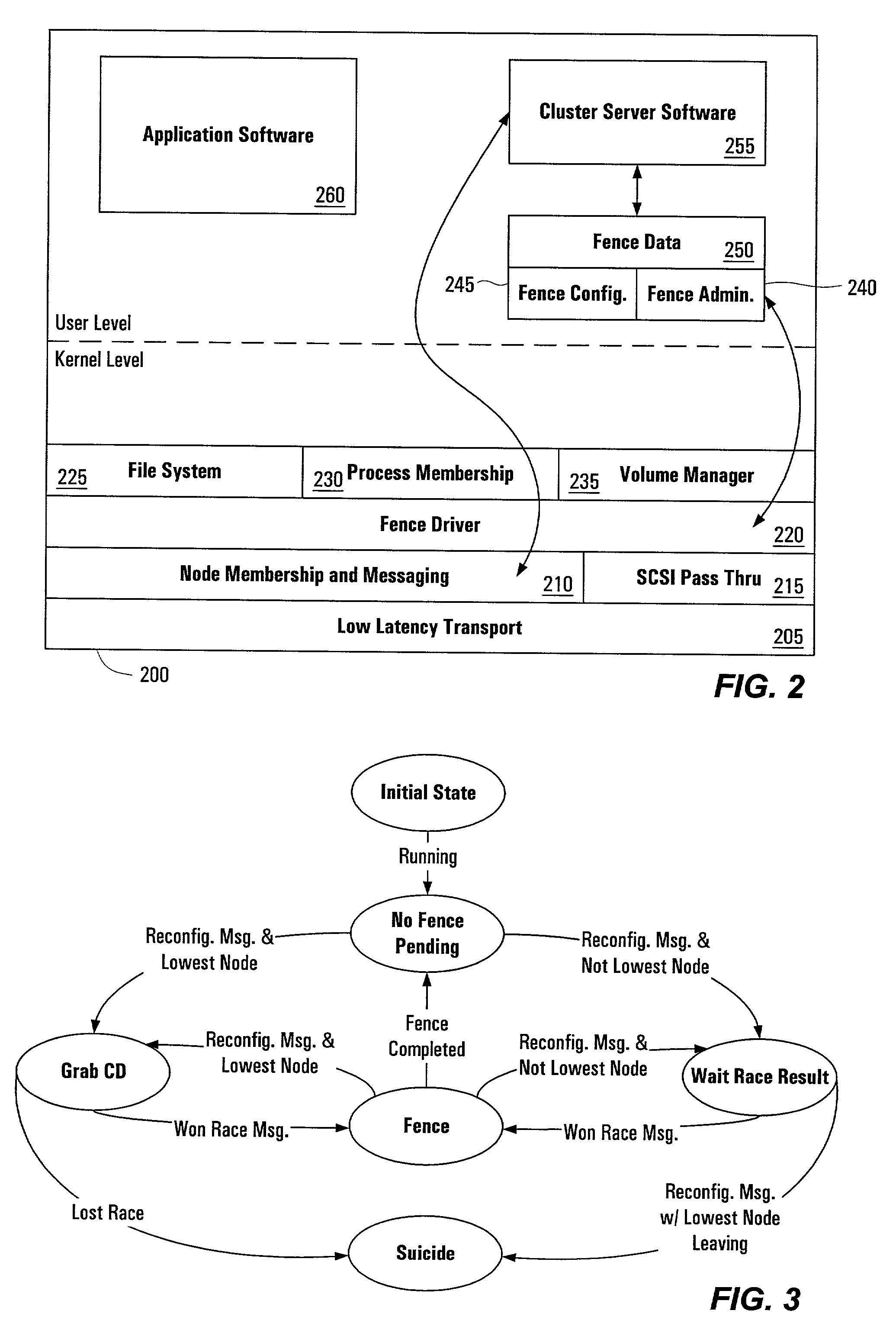System and method for preventing data corruption in computer system clusters
a computer system and cluster technology, applied in the field of fault tolerance in distributed computer systems, can solve problems such as data corruption, excessive delay in the normal sequence of communication between nodes, and variety of detrimental effects, and achieve the effect of reducing the failure tim
- Summary
- Abstract
- Description
- Claims
- Application Information
AI Technical Summary
Benefits of technology
Problems solved by technology
Method used
Image
Examples
Embodiment Construction
[0024]The following sets forth a detailed description of at least the best contemplated mode for carrying out the one or more devices and / or processes described herein. The description is intended to be illustrative and should not be taken to be limiting.
[0025]The systems, methods, apparatus and software of the present invention make use of persistent resource registration and reservation commands. In particular, this description will focus on the use of small computer system interface version 3 (SCSI-3) persistent reservation and registration commands. However, systems, methods, apparatus and software of the present invention need not be limited to SCSI-3 commands. Any device command structure providing similar functionality can be used, and SCSI-3 persistent resource registration and reservation commands are only one example. Useful SCSI-3 commands include READ KEYS and READ RESERVATIONS persistent reservation in commands; and REGISTER, RESERVE, RELEASE, CLEAR, PREEMPT, and PREEMP...
PUM
 Login to View More
Login to View More Abstract
Description
Claims
Application Information
 Login to View More
Login to View More - R&D
- Intellectual Property
- Life Sciences
- Materials
- Tech Scout
- Unparalleled Data Quality
- Higher Quality Content
- 60% Fewer Hallucinations
Browse by: Latest US Patents, China's latest patents, Technical Efficacy Thesaurus, Application Domain, Technology Topic, Popular Technical Reports.
© 2025 PatSnap. All rights reserved.Legal|Privacy policy|Modern Slavery Act Transparency Statement|Sitemap|About US| Contact US: help@patsnap.com



